UTA Micro 2460 Chapter 9
1/89
There's no tags or description
Looks like no tags are added yet.
Name | Mastery | Learn | Test | Matching | Spaced |
|---|
No study sessions yet.
90 Terms
Binary Fission
Most common form of bacterial reproduction
Binary Fission
4Basic Steps
1.Growth of cell size and increase in cell components
2.Replication of DNA
3.Division of the cytoplasm (cytokinesis)
4.Septum formation and division of daughter cells
Z ring Assembly
•Cytokinesis is directed by FtsZ protein
•FtsZ assembles Z ring to form divisome
•Divisome activates production of peptidoglycan and septum
Generation Time
•Generation Time (Doubling Time) - time takes to double population
Generation Time
among species
•E. coli = 20 min. S. aureus = 30 min.
B. subtilis = 120 min.M. tuberculosis = 15-20 hrs
Calculating Population Size
•Growth is exponential (if resources are no concern)
•Population can be predicted from any starting size
Nn= N02n
Nn - number of cells at generation n
n - number of generations
N0 - initial number of cells
•
•Number of generation may need to be calculated
•Ex. Generation time of 30 min = 48 generations in 24 hours
1 initial cell would result in more than 281 trillion cells after 1 day!
Growth Curve
•Closed cultures have finite resources (i.e. nutrients)
Culture density
the number of cells per unit volume
growth curve phases
lag phase, log phase, stationary phase, death phase
1.Lag phase
- inoculum cells added and adjust to culture medium; no change in population
2.Log
(exponential) phase - binary fission occurs;cell replication > cell death
3.Stationary phase
resources become depleted cell replication = cell death
4.Death phase
1.Death phase - endospores can form cell replication < cell death
Lag Phase
•Initial cell numbers do not change
•Cells grow larger; metabolically active
•Damaged or shocked cells undergo repair
•Duration of the lag phase determined by many factors including:
•Genetic make-up
•Media composition
•Initial inoculum size
Log Phase
•Generation time is genetically determined (intrinsic growth rate)
•Time vs. # of cells is exponential (semilog displays linear)
•Constant growth & uniform metabolism; good for industrial applications
•Most susceptible to disinfectants and antibiotics that affect protein, DNA, and cell-wall synthesis
Intrinsic Growth Rate
Generation time is genetically determined
Stationary Phase
•Waste accumulates; nutrients gradually used up
•Culture density is constant
•Cells enter survival mode; synthesis slows; less susceptible to antibiotics
•Undergo sporulation for endospore-formers
•Expression of virulence factors and secondary metabolites
Death Phase
•Toxic waste accumulates; nutrients exhausted
•Cells lyse and release nutrients for surviving cells and endospore-formers
•Persisters- surviving cells with slow metabolism
•Chronic infections (e.g. tuberculosis); antibiotic resistance
Persisters
Surviving cells with slow metabolism
Sustaining Growth:
•Open system cultures have infinite resources
•Nutrients & air are replenished
•Dead cells & waste are removed
•Beneficial for industrial microbiology
Measuring Growth
•Quantifying populations size is important for determining infection, contamination of water or food supply, etc.
Measuring Growth
Methods
Methods:
•Microscopic cell count
•Fluorescent staining for alive & dead cells
•Coulter count
•Viable cell count
•Optical Density
Direct microscopic cell count
cells are counted under a microscope
•Known volume is transferred to a calibrated slide (Petroff-Hausser chamber) and cells are manually counted
•Cannot distinguish live vs. dead
Fluorescence Staining
•cells are counted under a microscope or flow cytometer
•Red stain binds to damaged cells to indicate dead cells
Coulter counter
•detects electrical resistance change due to cell density
•Does not differentiate live/dead
Viable plate counts
•count of viable cells; samples are diluted and grown on solid media
•Results expressed in colony forming units per volume (CFU/ml)
•Limited only to easily cultured species
•Serial dilution is plated and counted via pour plate or spread plate technique
•Countable range is traditionally 30-300 CFU/ml (statistically most accurate)
<30 - TFTC >300 - TNTC
serial dilution method
•Counting viable CFU requires distinguishable colonies
•Achieved thru serial dilution to achieve the 30-300 CFU/ml range
•Often dilutions are on log scale
•Dilution "factor" is used to determine original CFU count
Dilution Factor
is used to determine original CFU count
pour plate method
A method of inoculating a solid nutrient medium by mixing bacteria in the melted medium and pouring the medium into a Petri dish to solidify

Spread Plate Method
a plate count method in which inoculum is spread over the surface of a solid culture medium
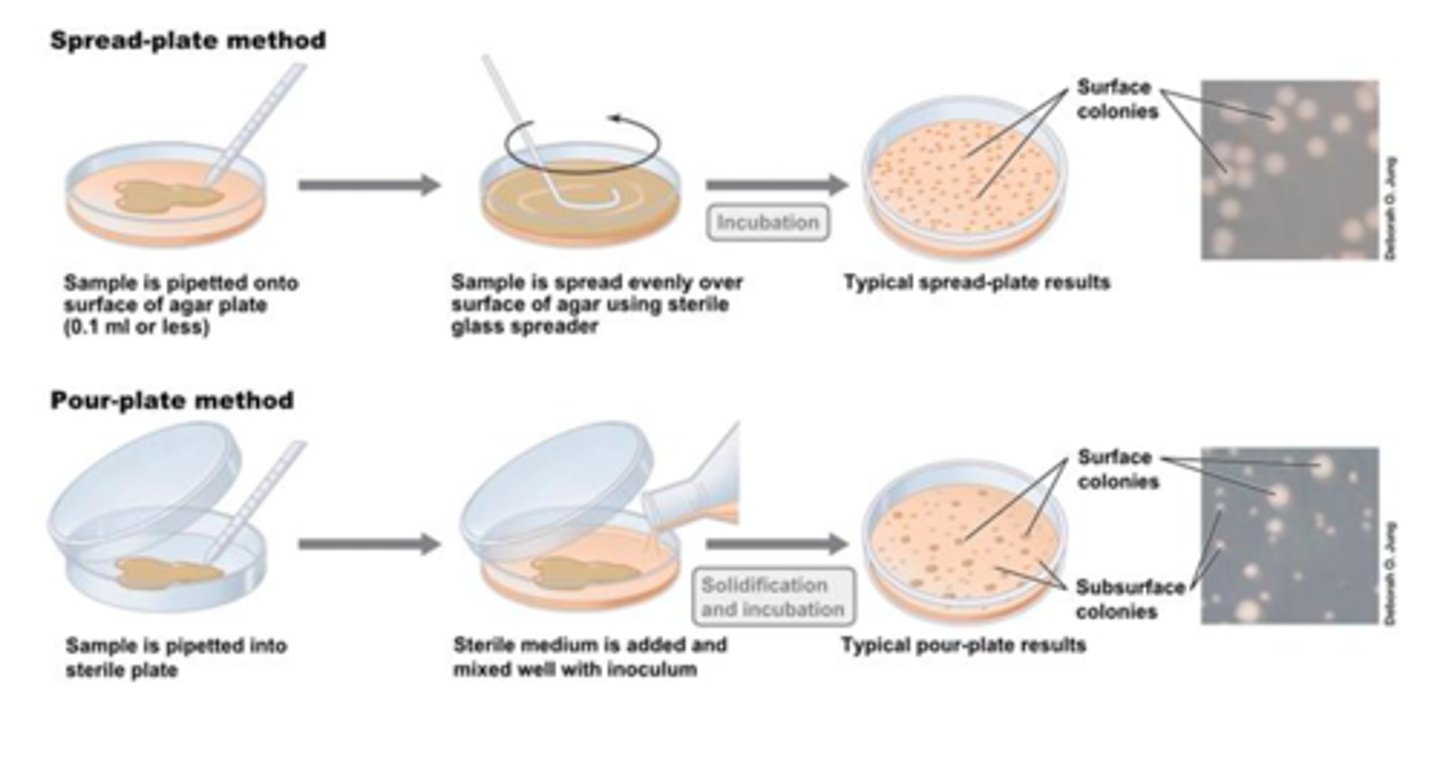
Measuring growth
Dilute Samples
•Very dilute samples (e.g. drinking water) may not contain enough microbes for plate count
•Sample concentrated instead of diluted
•Membrane filtration technique - known vol. filtered through a membrane; membrane plated and colonies counted
Membrane Filter Technique
known vol. filtered through a membrane; membrane plated and colonies counted
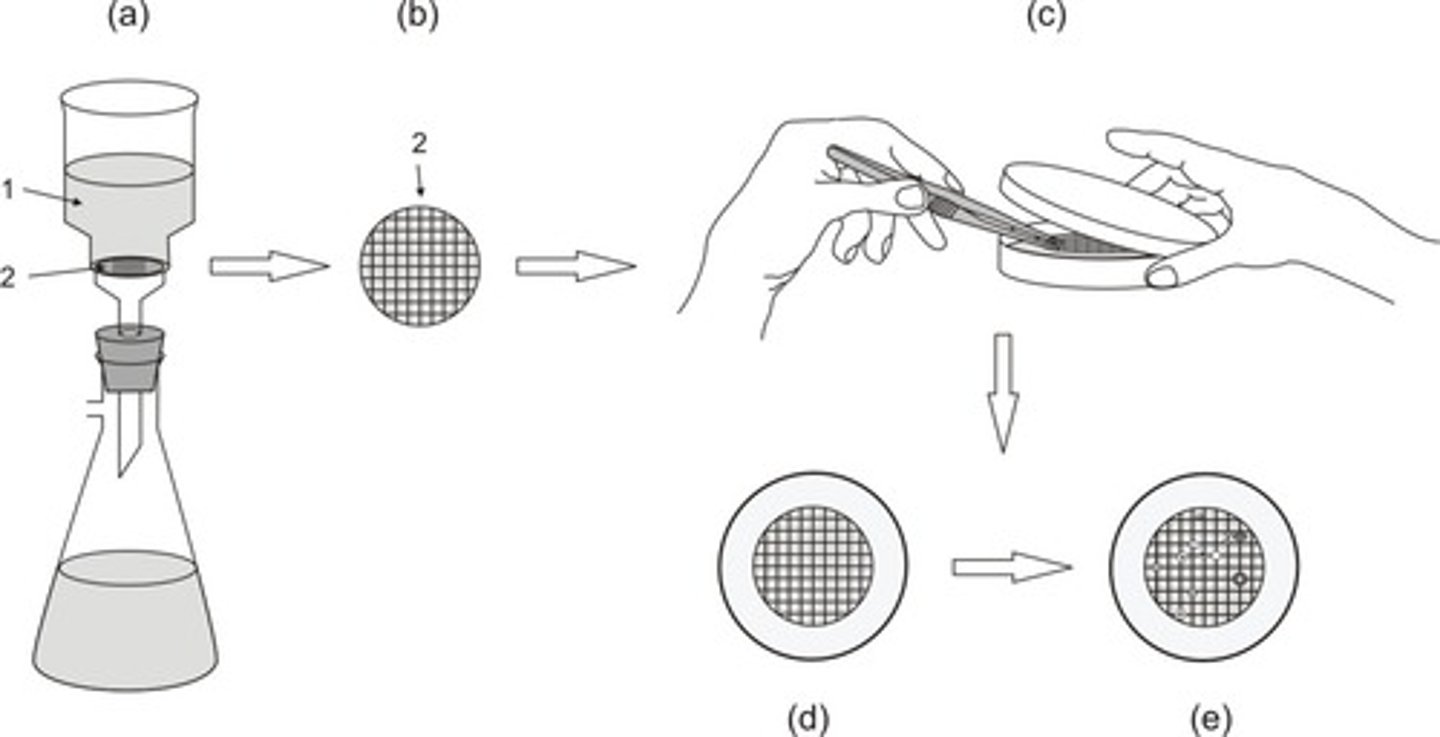
Most probable number (MPN)
•- statistical method used when counts are very low (<30 CFU/ml)
•Used in water & food testing
•Uses 3 log dilutions (ex: 1/1, 1/10, 1/100) grown in 3-5 replicates
•Growth is determined positive or negative
•Pattern is compared to reference table (Appendix B)
most probable number method

Optical Density
(turbidity)
•Measured w/ spectrophotometer
•Light is passed thru culture and measured on other side
•Population increase = turbidity increase
Alternate patterns of growth
Some divide asymmetrically (budding) or fragmentation
Fragmentation in
cyanobacteria
Budding of Planctomycetes:
Gemmata obscuriglobus
Biofilm Formation
•Micro ecosystem of one or more species that can provide protection
•Forms mostly in liquid environments (rivers, pipelines, oral cavity)
Biofilm structure:
-clusters of microbes in a matrix
•Extracellular polymeric substances (EPS)
•Secreted by organisms in the biofilm
•Hydrated polysaccharide gel with other macromolecules and channels
Biofilm Formation
Steps of formation:
1.Attachment of planktonic cells to a substrate
2.Attachment becomes irreversible; cells become sessile
3.Growth & division on substrate
4.Production of extracellular polymeric substance (EPS)
5.Attachment of secondary colonizers & dispersion of microbes to new locations
Biofilm Formation
Formed thru:
•Formed through quorum sensing, or cell to cell communication
•TED talk
•Cell density or cellular stress
•Autoinducer small molecules are produced to induce various actions
•Classes: N-acylated homoserine lactones (Gram -) Various short peptides (Gram +)
Autoinducer
a small signal molecule that takes part in quorum sensing
Quorum Sensing molecule classes:
•Classes: N-acylated homoserine lactones (Gram -) Various short peptides (Gram +)
Environmental Factors & Generation Time
•For every extreme, there is likely a species
Main factors that affect growth:
1.Oxygen Level
2.pH
3.Temperature
4.Osmotic pressure
5.Barometric pressure
Oxygen Requirements
•O2 is not always needed or tolerated (Recall: anaerobic respiration)
•Many environments do not have O2
Oxygen Requirements
Levels
•Optimal oxygen concentration -ideal concentration of O2
•Minimum permissive oxygen concentration - lowest O2 concentration allowing growth
•Maximum permissive oxygen concentration - highest O2 concentration allowing growth
•Organism will not grow outside min and max range
Optimal oxygen concentration
ideal concentration of O2
Minimum permissive oxygen concentration
lowest O2 concentration allowing growth
Maximum permissive oxygen concentration
highest O2 concentration allowing growth
Respiration Terminology
•Oxygen requirement can be used to group microbes:
•Obligate aerobes
•Obligate anaerobes
•Facultative anaerobes
•Aerotolerant anaerobes
Microaerophiles
oxygen requirements for Microbial growth
•Obligate = must have
•Facultative = can do both
•Aerotolerant = tolerant
•Aerobe = prefers O2
•Anaerobe = prefers other than O2
Fluid Thioglycolate Medium (FTM)
• - low percentage agar tube that has a gradient of oxygen
Aerotolerance
is determined by location of growth

obligate anaerobes
1.organisms that cannot live where molecular oxygen is present
2.Ex. Bacteroides spp

obligate aerobes
1.require oxygen
2.Ex. Micrococcus luteus

falcultative anaerobes
1.can survive with or without O2
2.Ex. Staphylococcus spp.
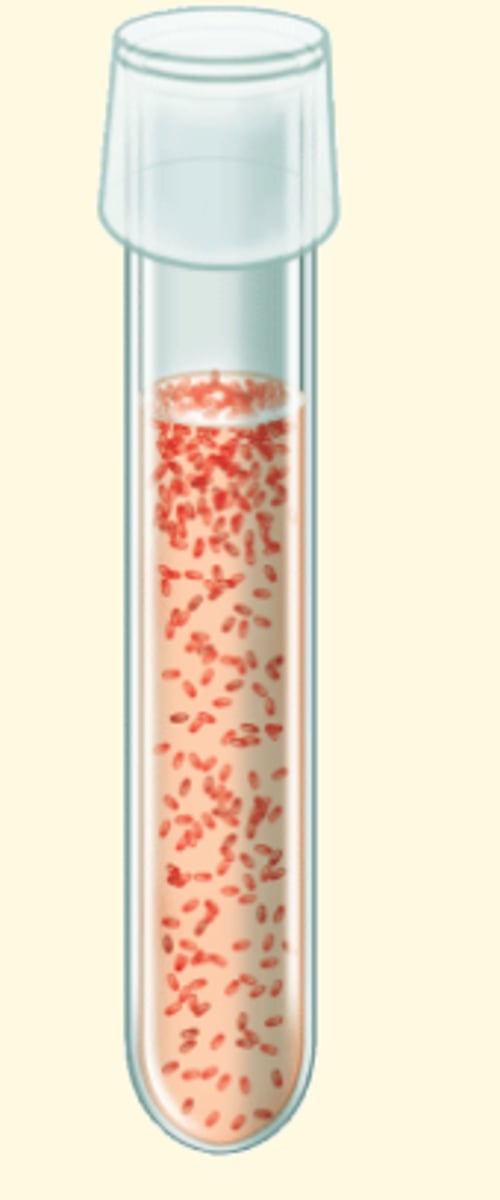
aerotolerant anaerobes
tolerate but cannot use oxygen
•Ex. Lactobacillus spp.

•Microaerophiles
can use oxygen only when it is present at levels reduced from that in air 1-10%
•Ex. Campylobacter spp.

Anerobic jars or anaerobic chambers
remove O2
•Studying obligate anaerobes requires special equipment
pH
•pH can affect efficacy of macromolecules; most vulnerable are proteins
•Microbes can prefer acidic (<7) or basic (>7)
•Fermenters are mostly adapted to acidity (think pickles!)
pH Requirements
•Optimal growth pH - most favorable pH for growth
•Minimum growth pH - lowest pH for growth
•Maximum growth pH - highest pH for growth
•Organisms have min. pH, optimal pH, & max. pH
pH requirements for growth
•Groups:
•Neutrophiles pH ~7
•Acidophiles pH <5.5
•Alkaliphiles pH 8-10.5
Temperature
•Microbes also have optimal range for temp.
•Optimal, Min. & Max. temperature
Temperature Requirements
•Mesophiles
= 20-45 °C
•Psychrotrophs
Temperature Requirements
= 4-20 °C
•Psychrophiles
Temperature Requirements
= <0 °C
Thermophiles temp
•Thermophiles = 50-80 °C
Hyperthermophiles Temp
•Hyperthermophiles = 80-110 °C; some survive @ >121 °C
Osmotic Pressure & Growth
•Solute concentrations outside the cell can have effects
•Halophiles - salt/solute lovers; found in oceans
•Halotolerant - tolerate high salt; salt marshes where high solutes aren't present all the time (Recall: MSA & S. aureus)
•
•Halophiles
"salt-loving" archaea that live in environments that have very high salt concentrations
Ex. Reg Alga and Halobacterium
•Halotolerant
tolerate high salt; salt marshes where high solutes aren't present all the time (Recall: MSA & S. aureus)
ex. Halomonas spp.
isotonic solution
Osmotic Growth
NO net movement of water particles, cell membrane is attached to cell wall
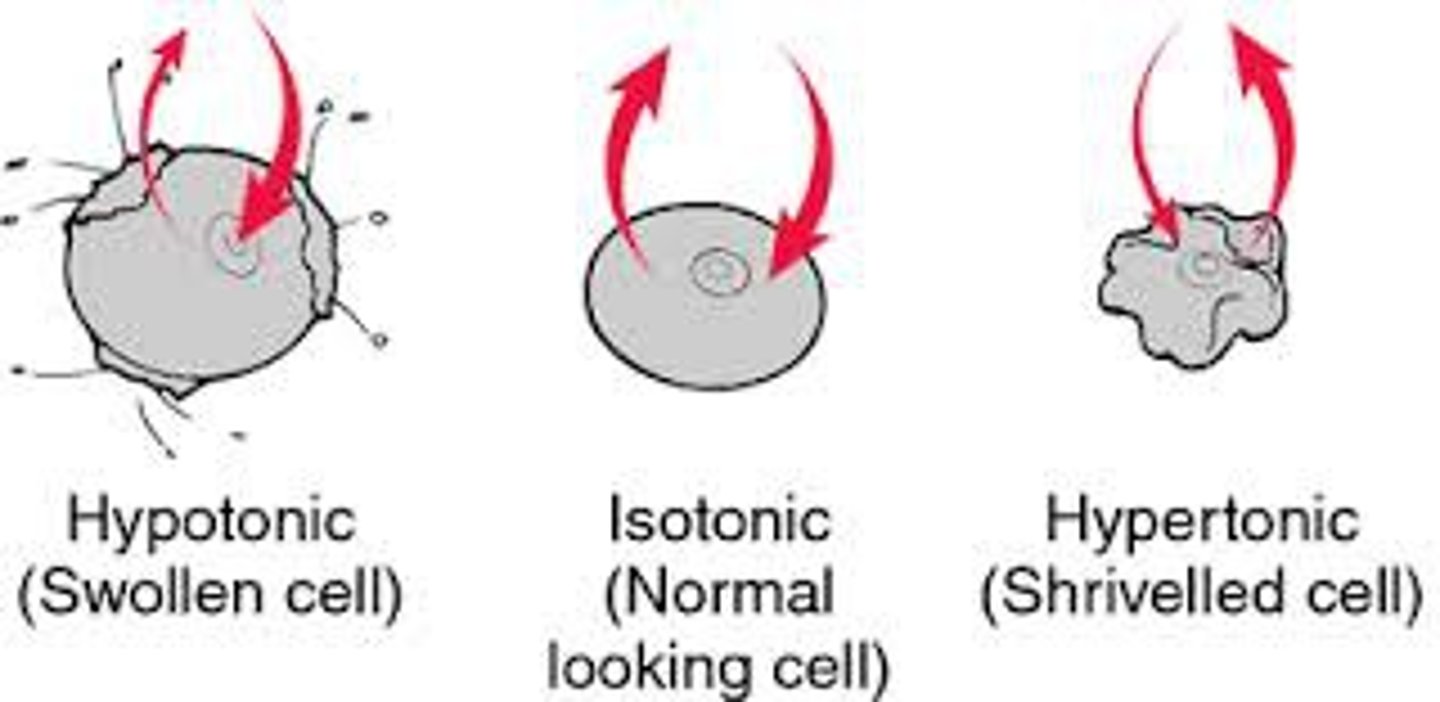
hypertonic solution
Osmotic Growth
Water particles move out of the cell, cell membrane shirks and detaches from cell wall. Plasmolysis
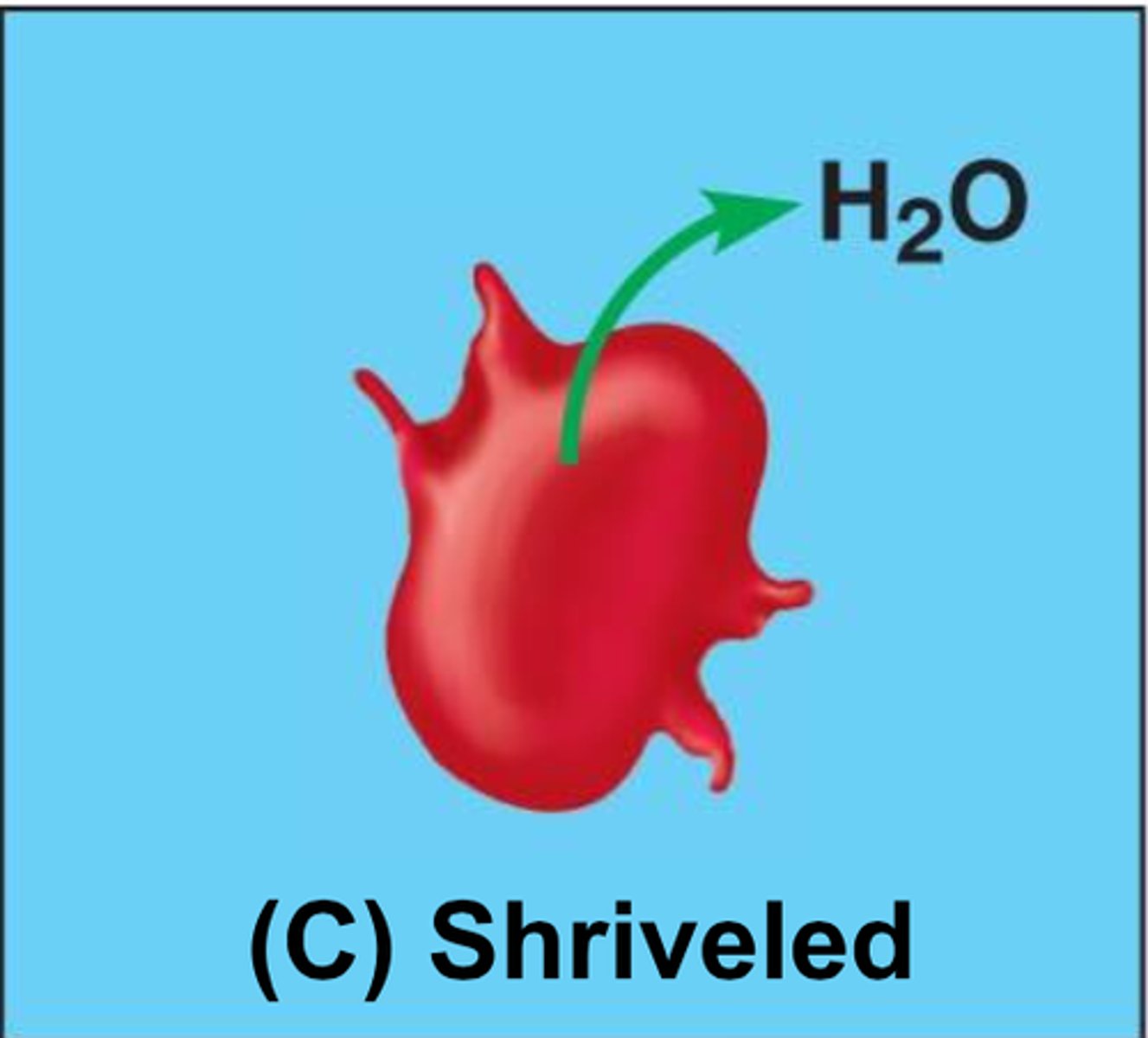
hypotonic solution
Osmotic Growth
Water particles move into cell, cell wall counter acts osmotic pressure. To prevent swelling and lysis
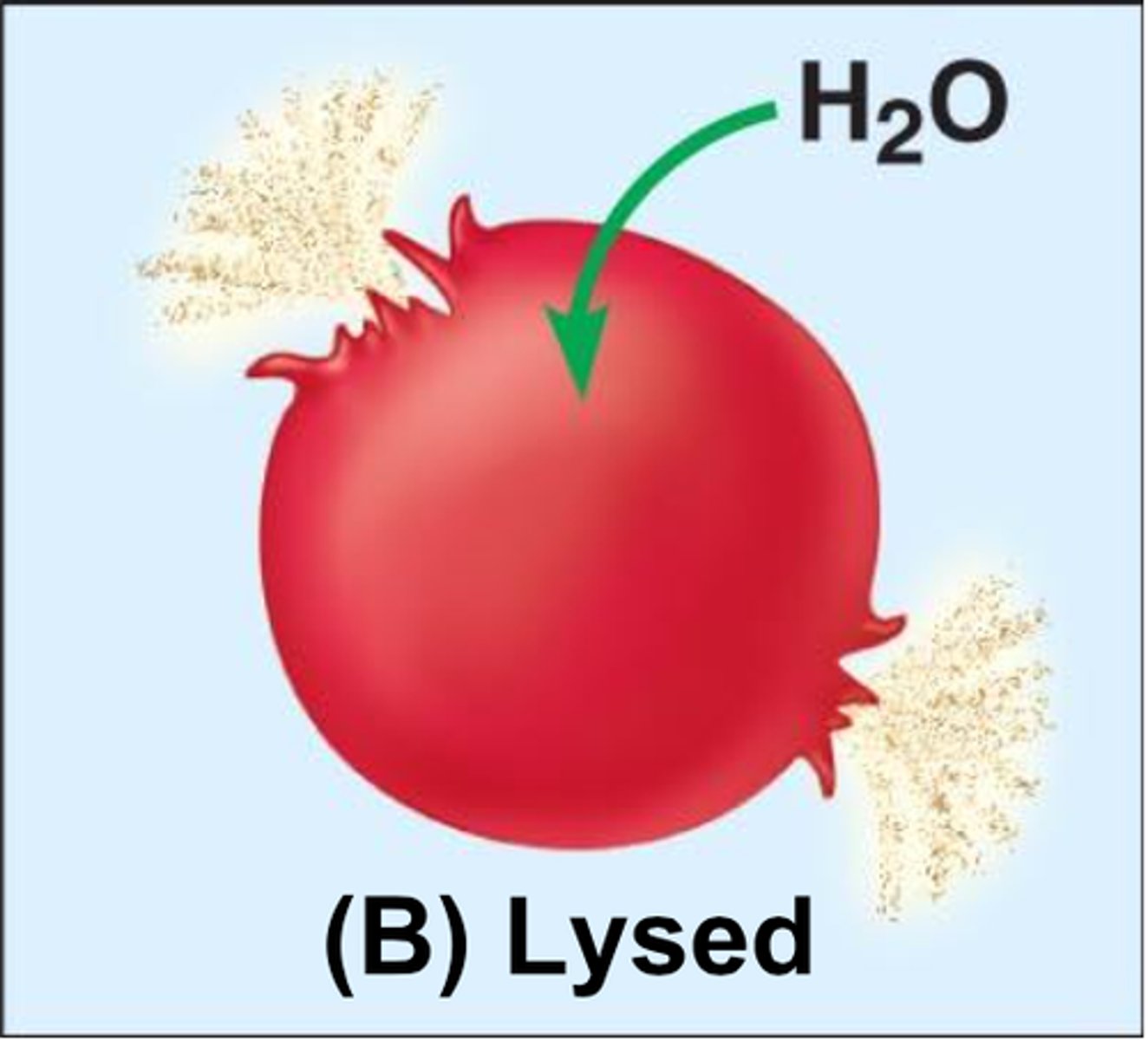
Media Used for Bacterial Growth
•All-purpose media (e.g. TSA)
•Enriched media - contains growth factors, vitamins, and other essentials to promote growth of :
•Fastidious organisms- cannot make certain nutrients
•Chemically defined medium- complete chemical composition known
•Complex medium- contains extracts and digests of yeasts, meat, or plants; exact composition not known
•Selective media - inhibit unwanted, promote growth of organism of interest
•Enrichment cultures promote growth of desired organism; only represents a fraction present
•Differential media - distinguish colonies of bacteria by color change
•Enriched media
-contains growth factors, vitamins, and other essentials to promote growth of :
•Fastidious organisms- cannot make certain nutrients
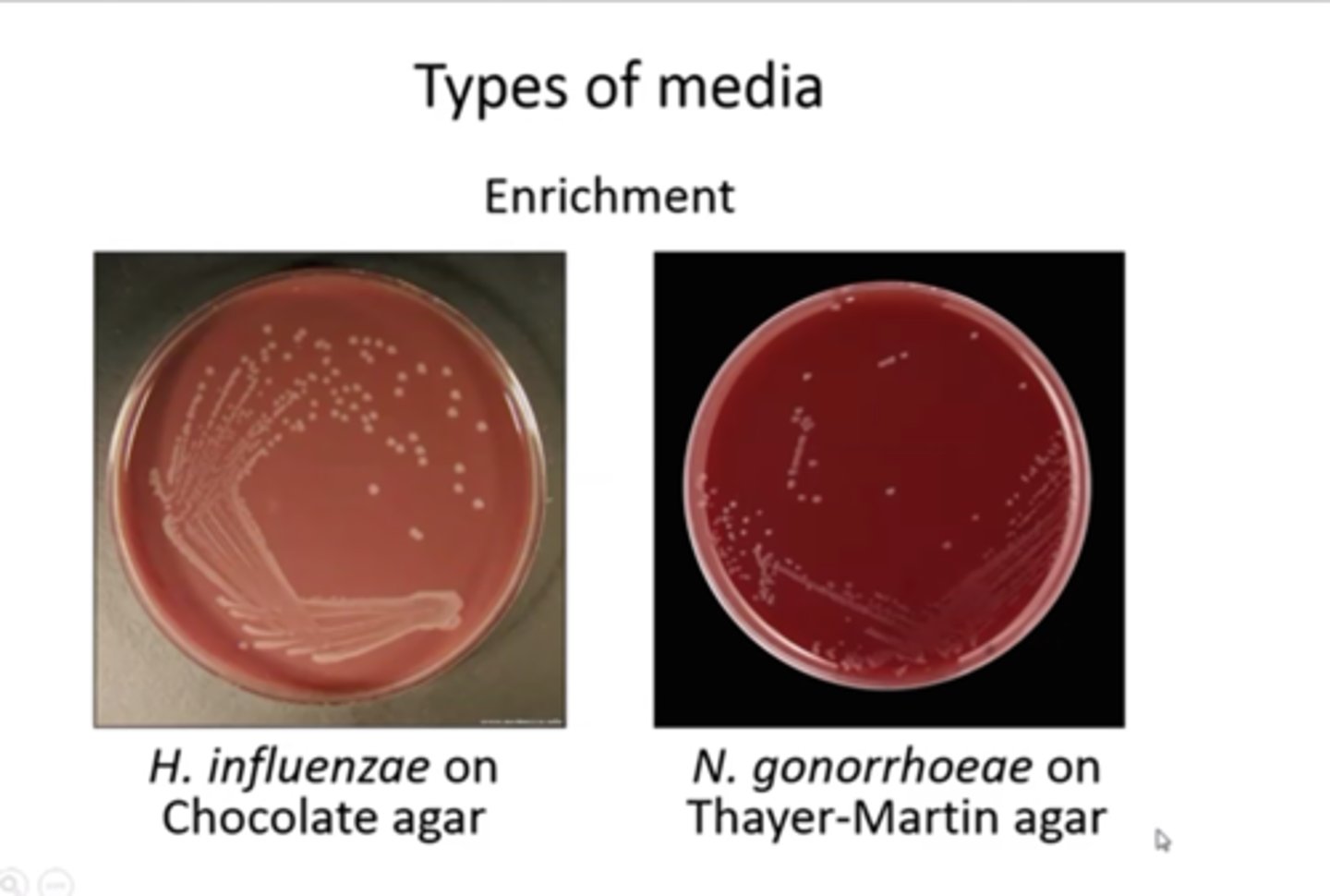
Chemically defined medium-
- complete chemical composition known
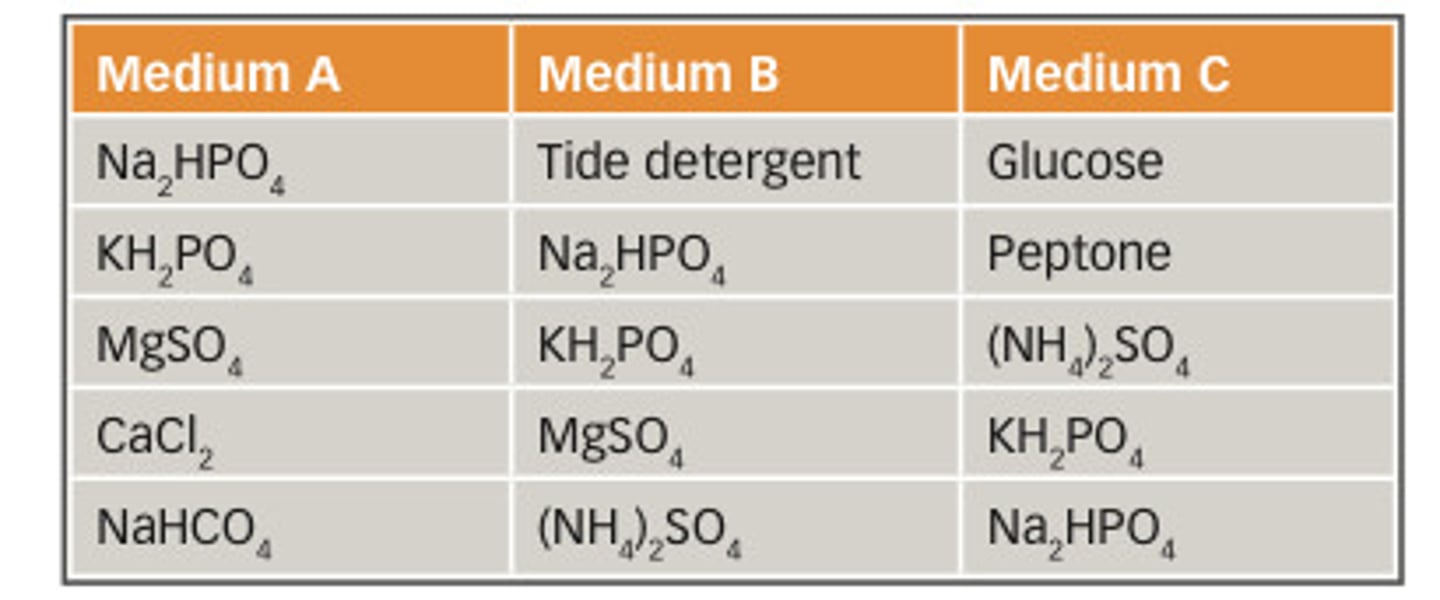
Complex medium
- contains extracts and digests of yeasts, meat, or plants; exact composition not known
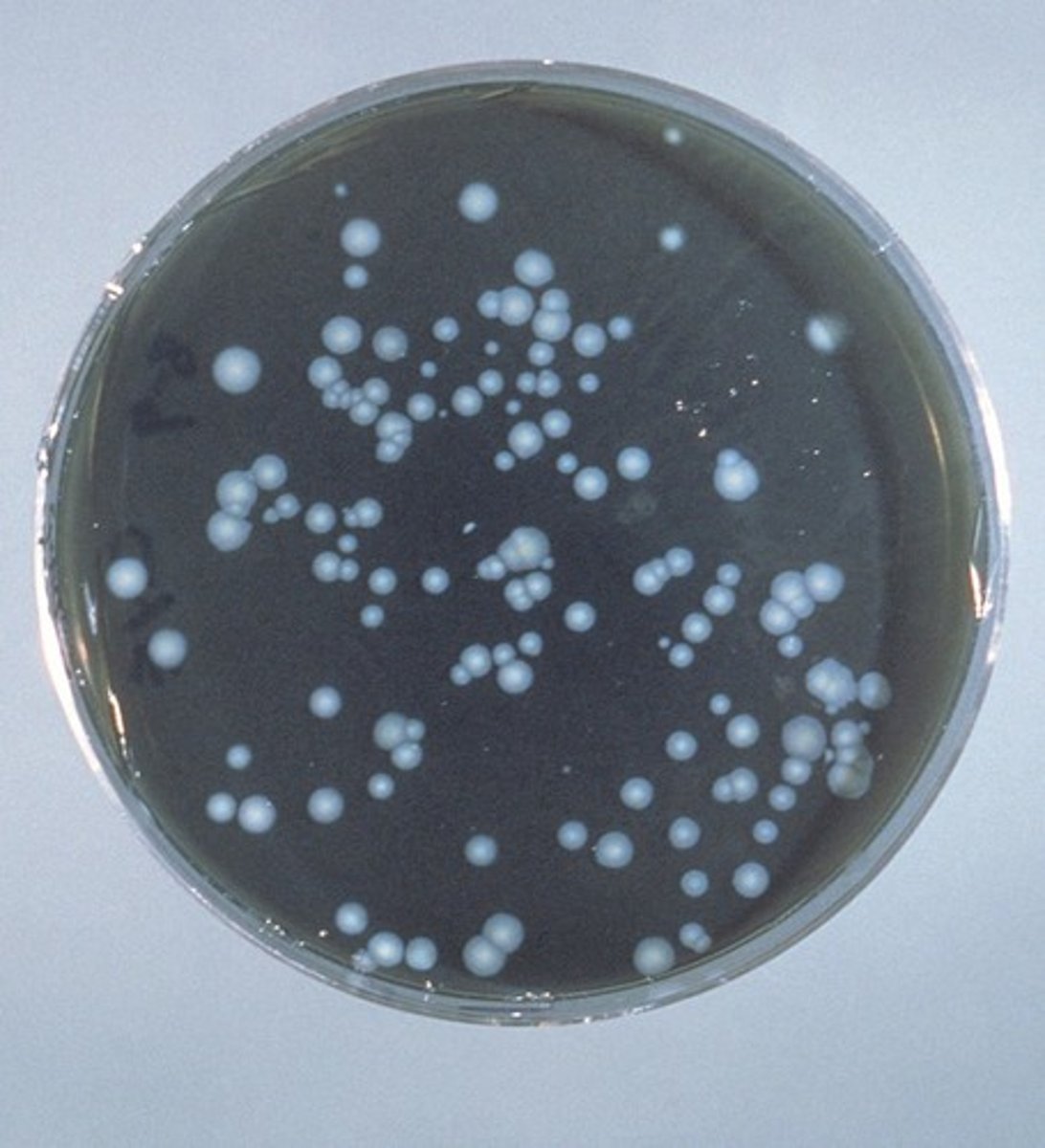
Selective media
- inhibit unwanted, promote growth of organism of interest
Enrichment cultures
promote growth of desired organism; only represents a fraction present

Differential media
- distinguish colonies of bacteria by color change
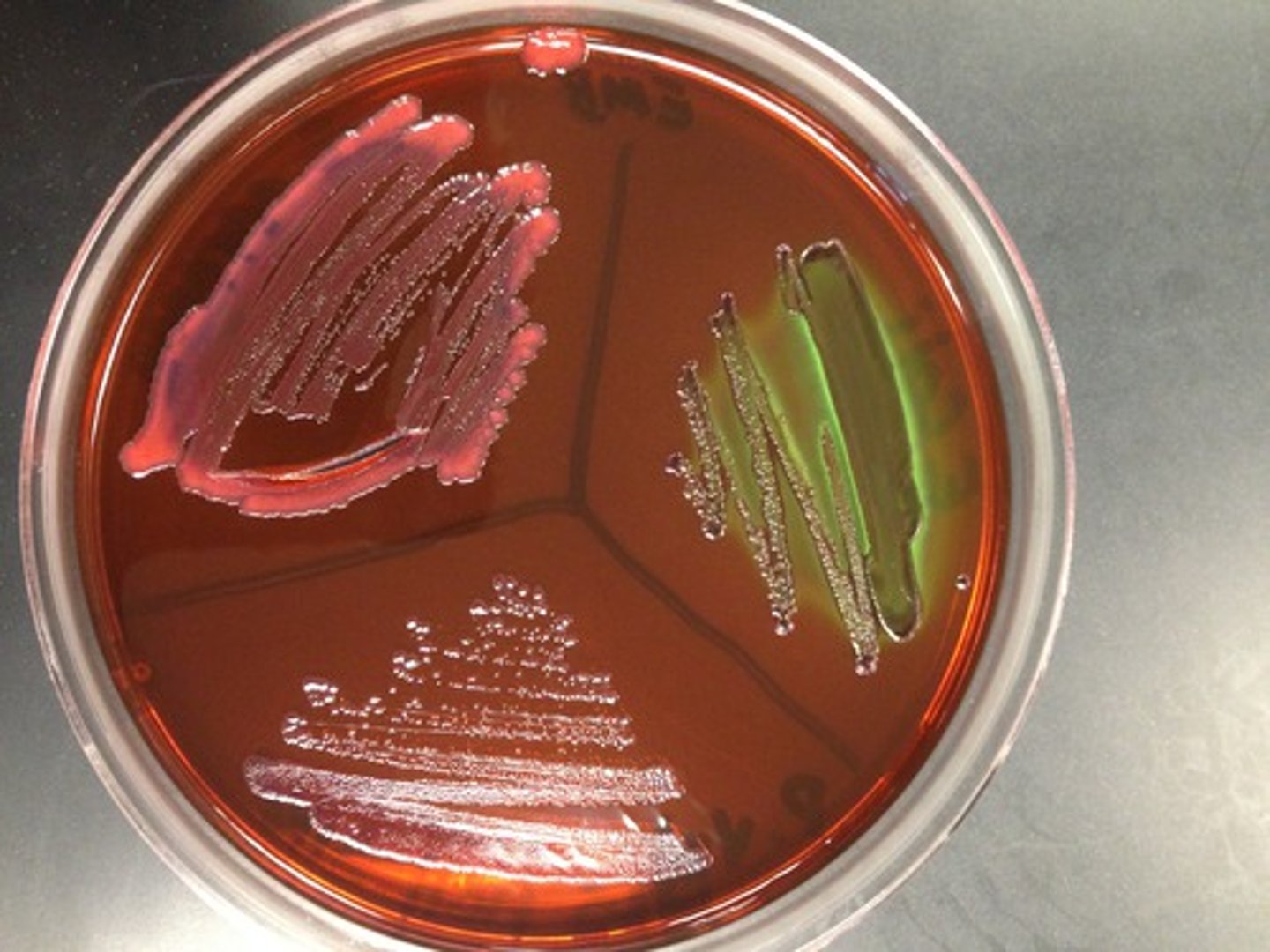
All purpose media
supports growth of most microorganisms (nutrient agar & broth, trypticase soy broth) (TSA)
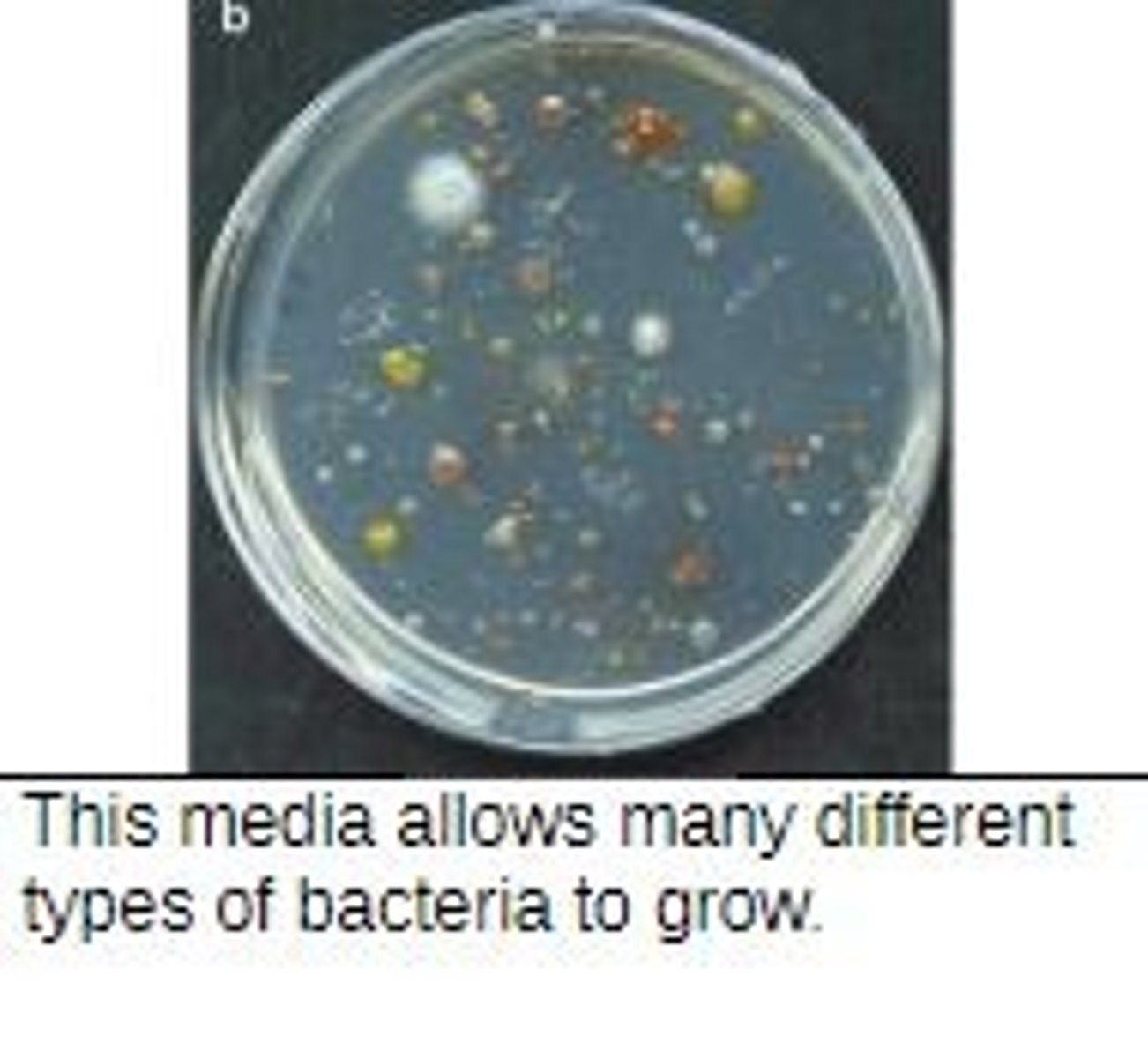
•Barophiles
•Ability to withstand great pressure
- require high atmospheric pressure
•Found on bottom of ocean
•Largely unculturable; not much known
•Also can be thermo or hyperthermophiles
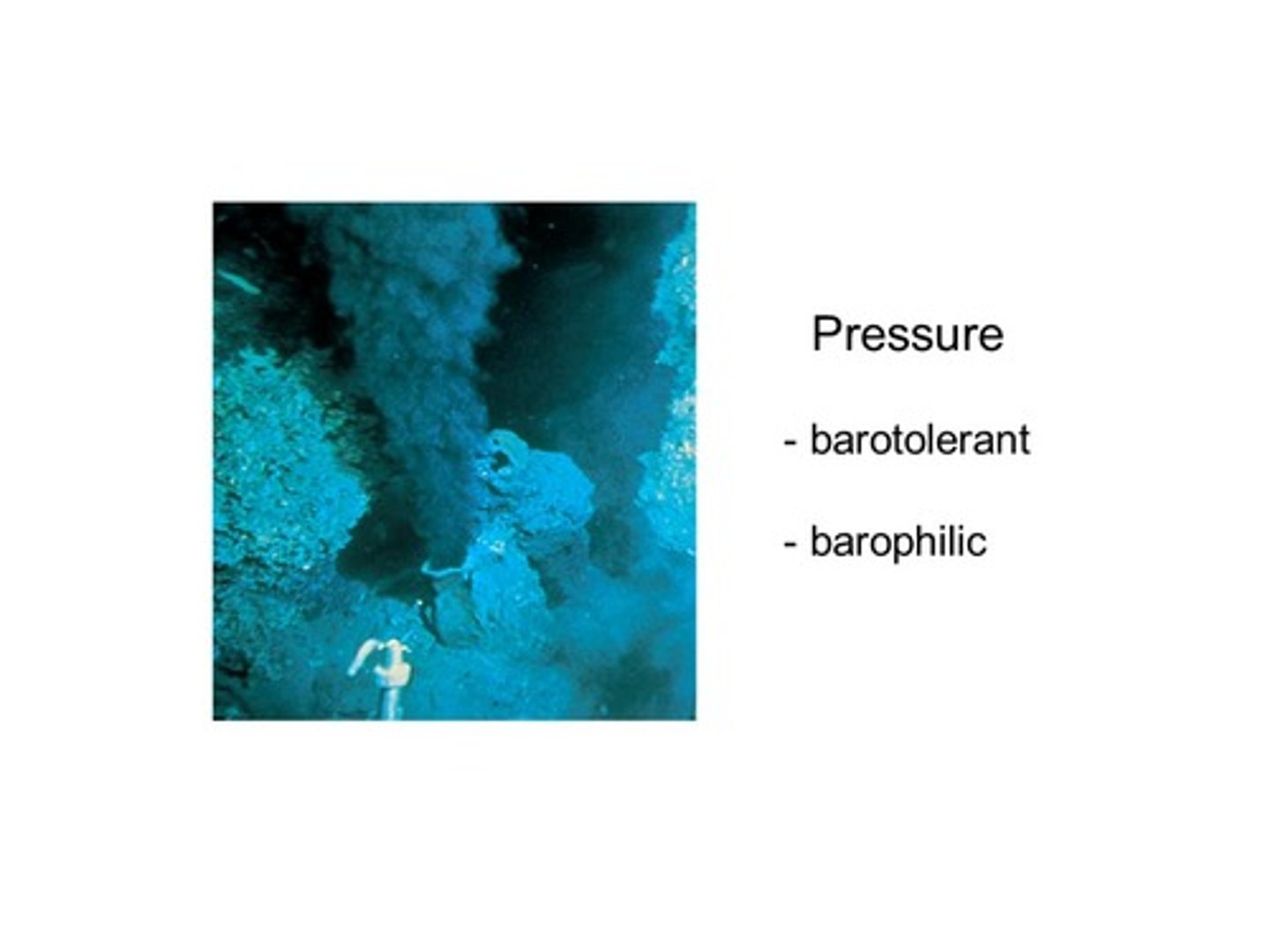
•Photoautotrophs
- cyanobacteria and green sulfurs

Photoheterotrophs
•- purple nonsulfurs

Photosynthetically active radiation (PAR)
The portion of electromagnetic spectrum that is absorbed by organisms
•Usu. within visible light spectrum (400-700nm)
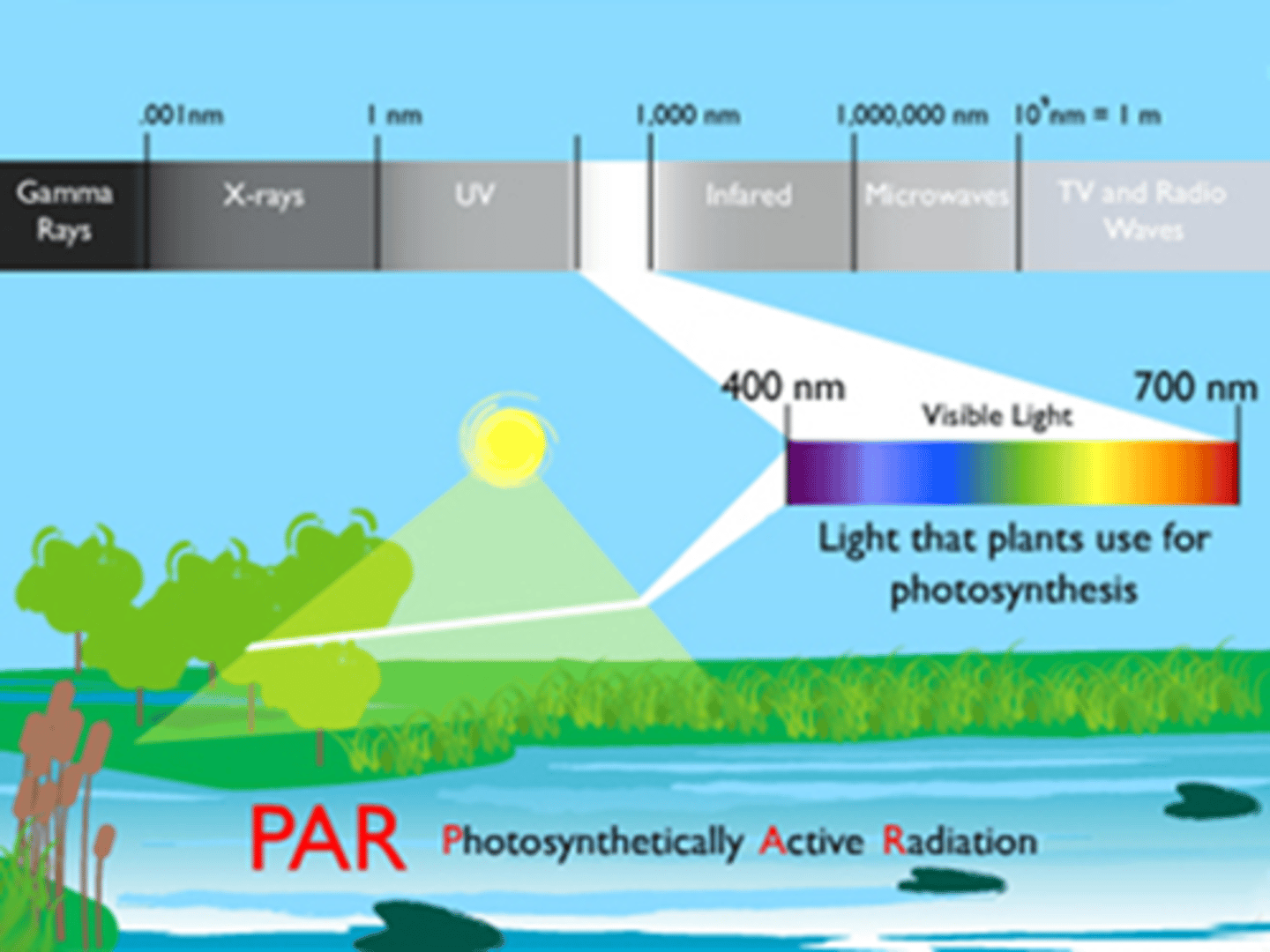
•Accessory pigments :
such as fucoxanthin in brown alga, and phycobilin in cyanobacteria, widen ranges for photosynthesis.
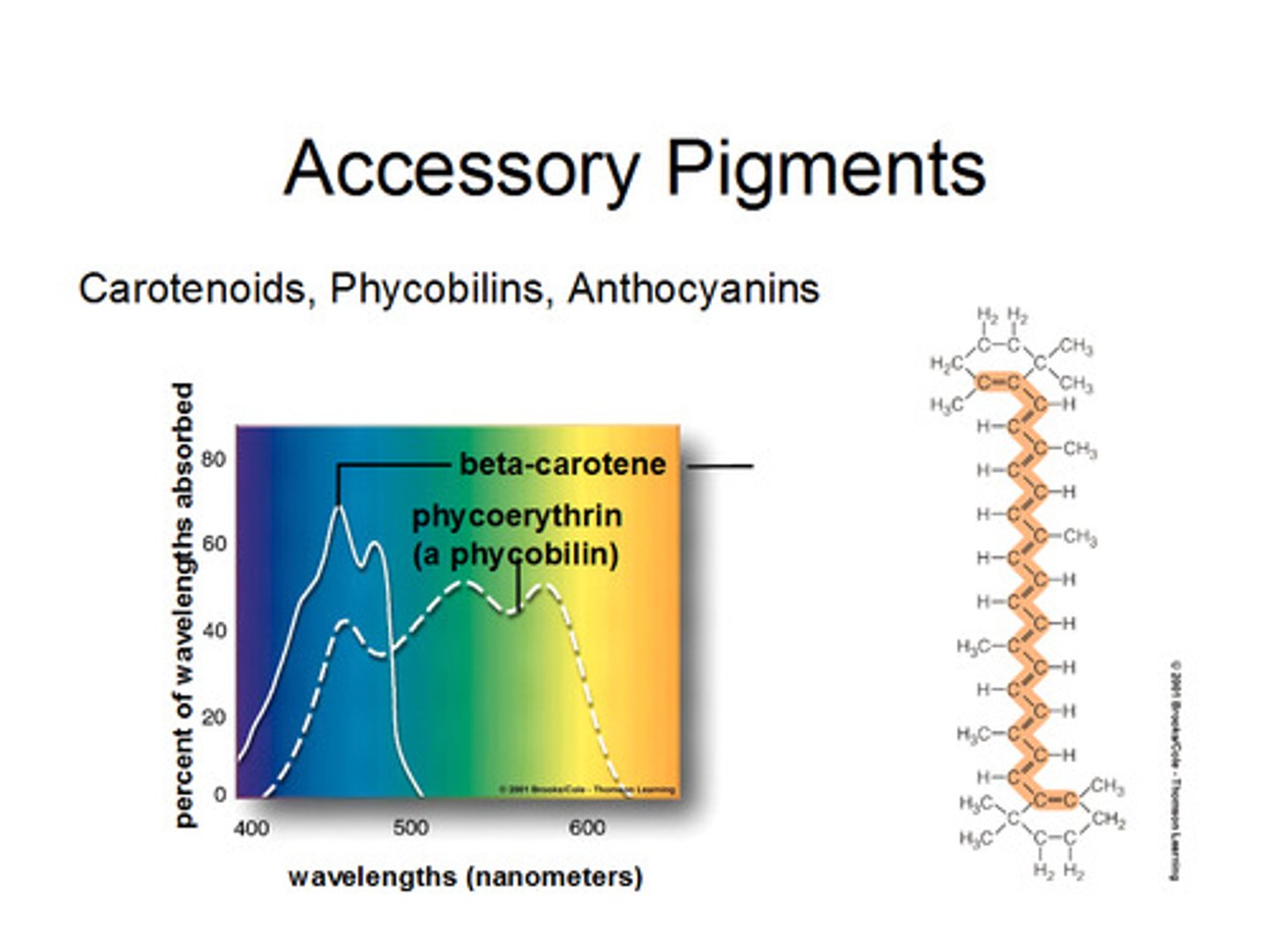
Z-ring function in binary fission
It forms a contractile ring at the septum